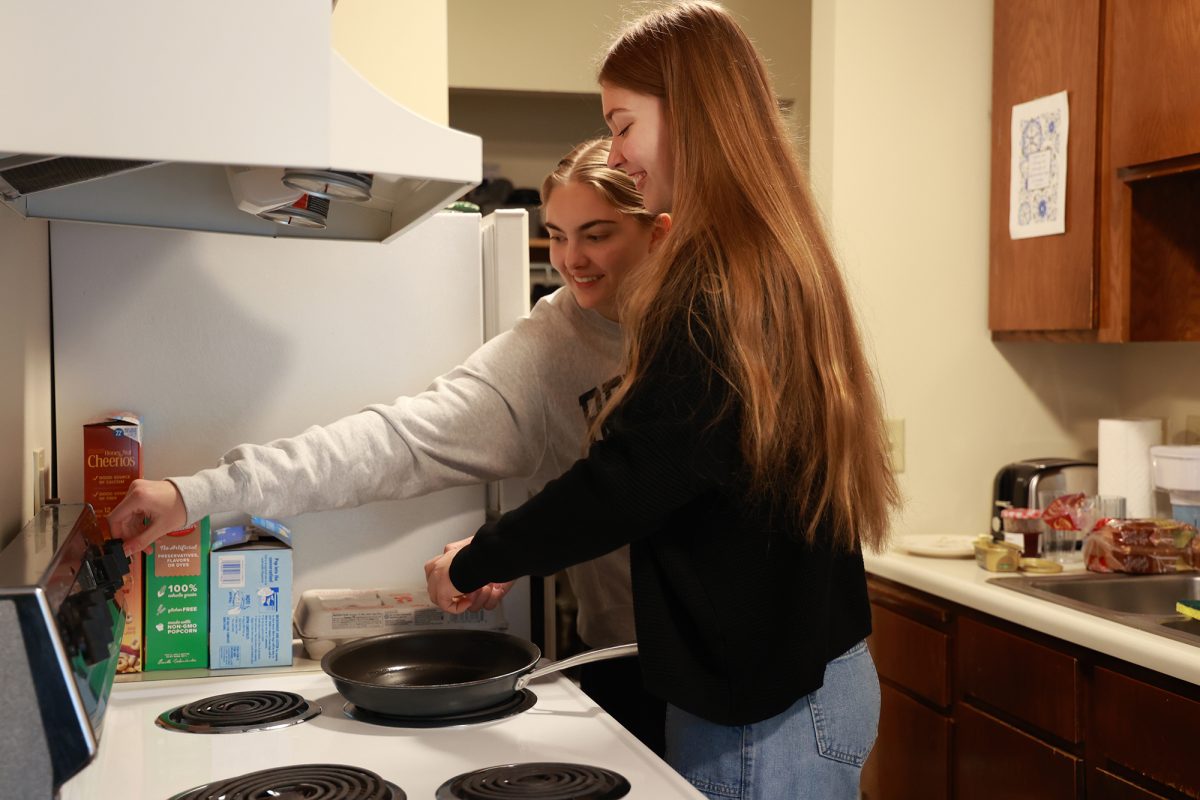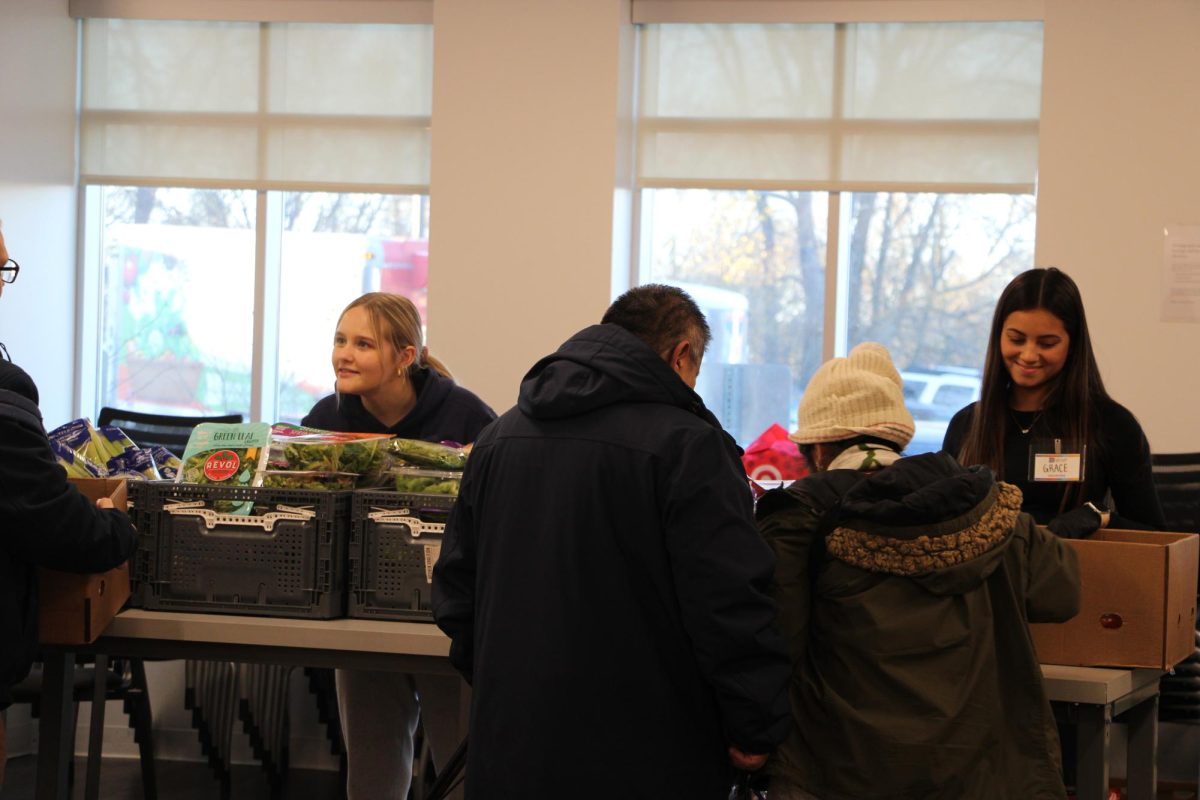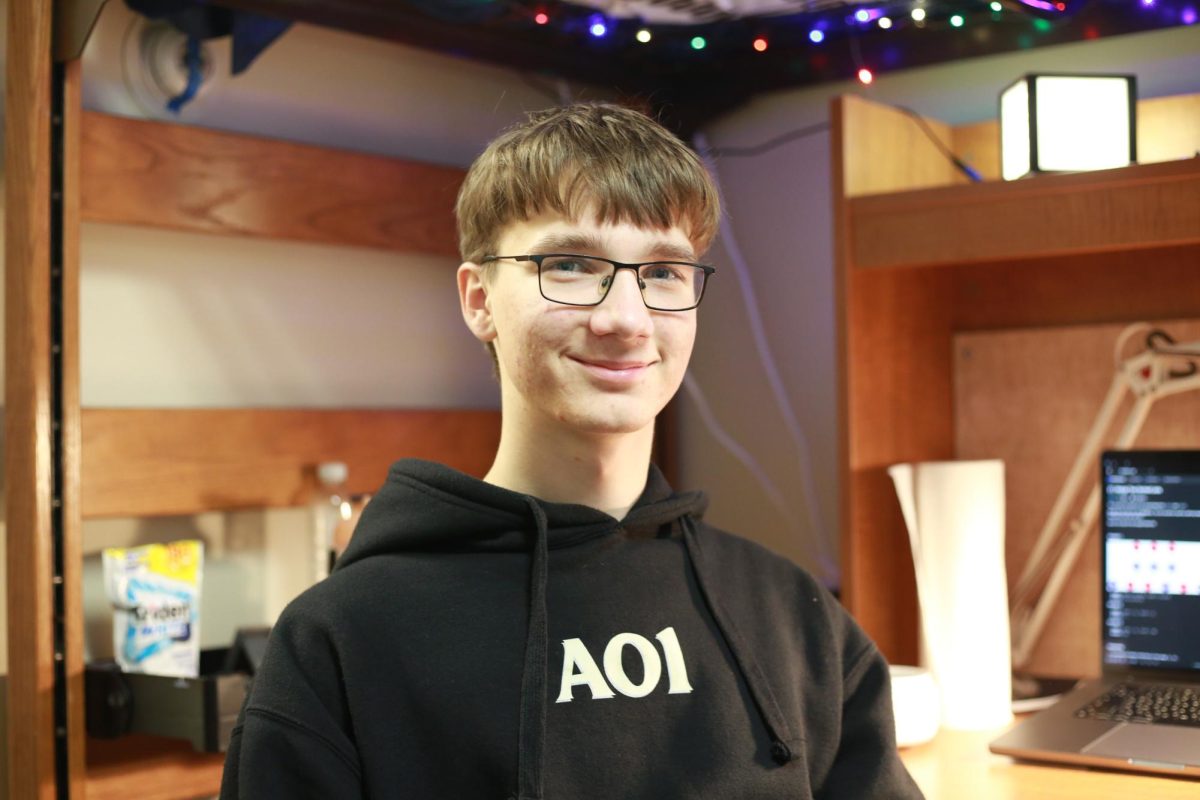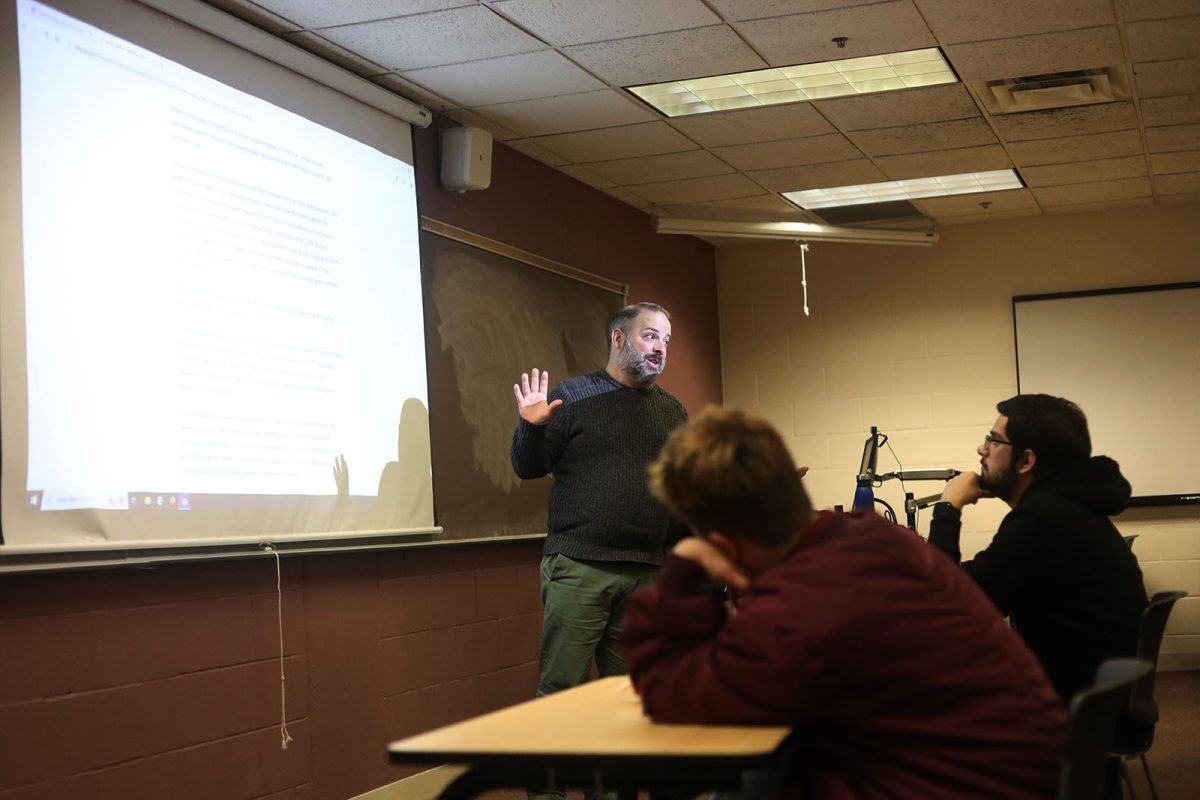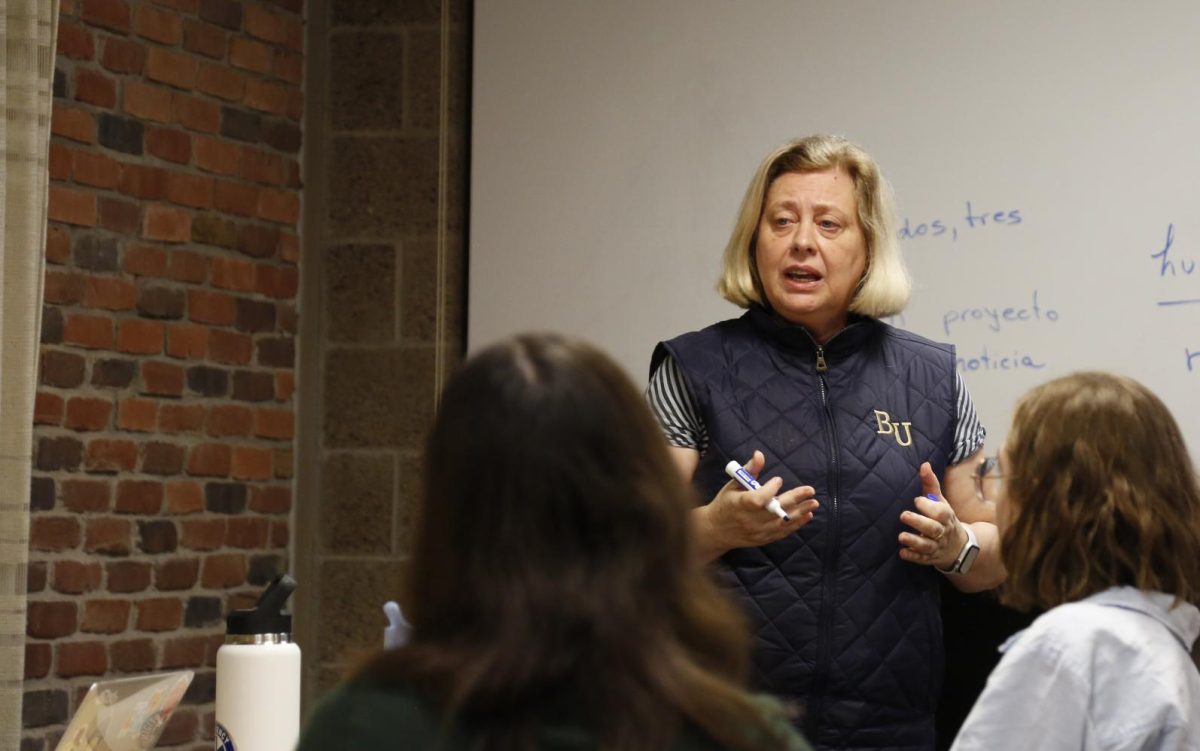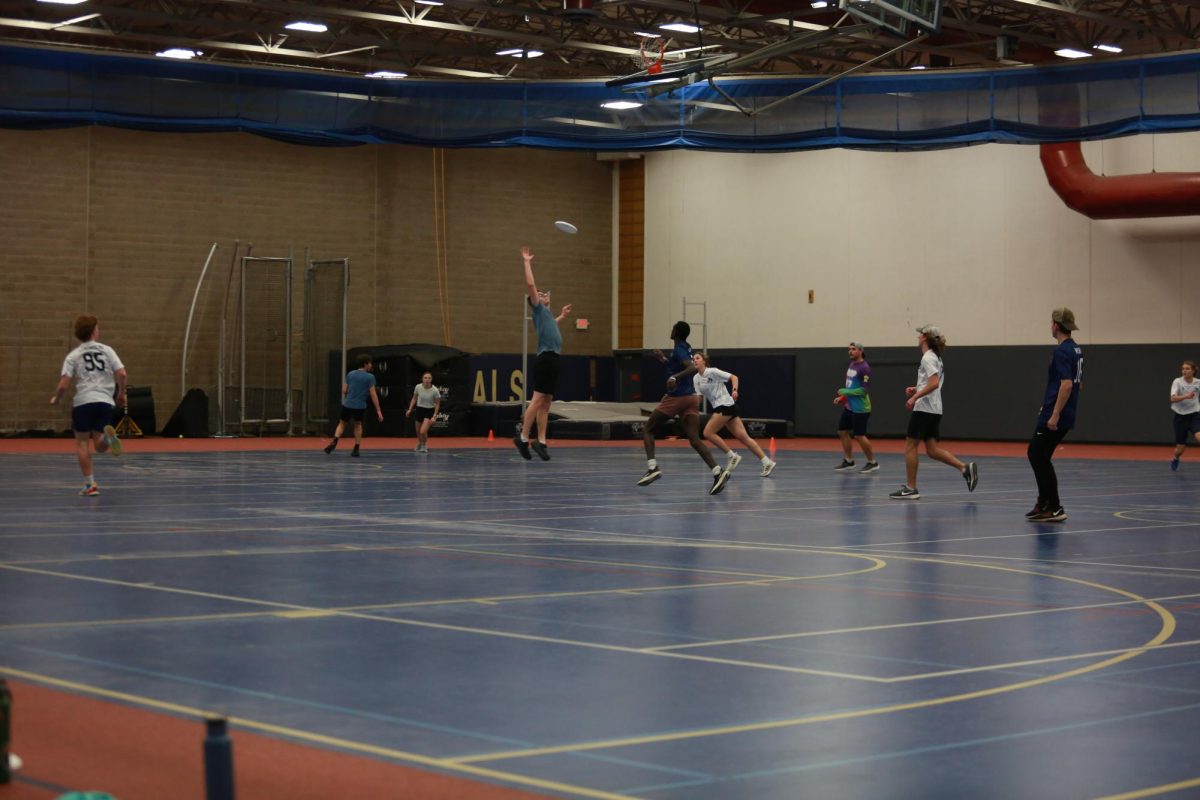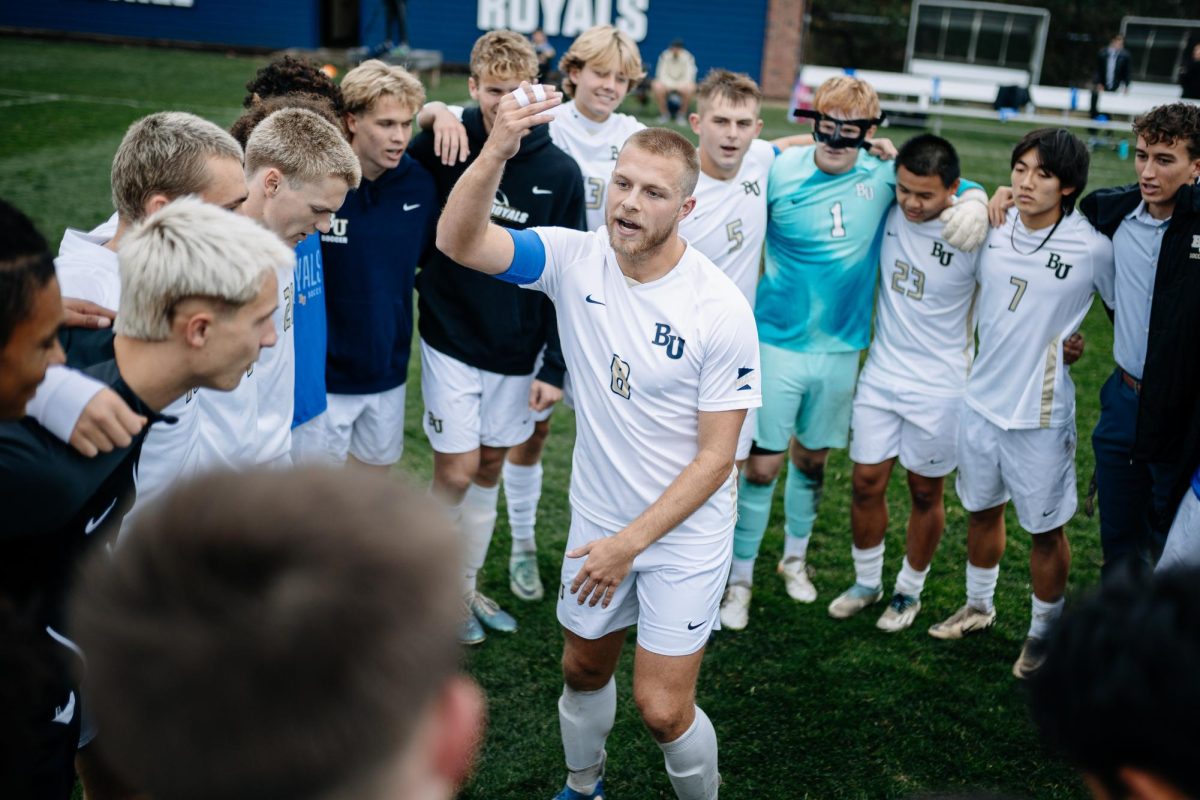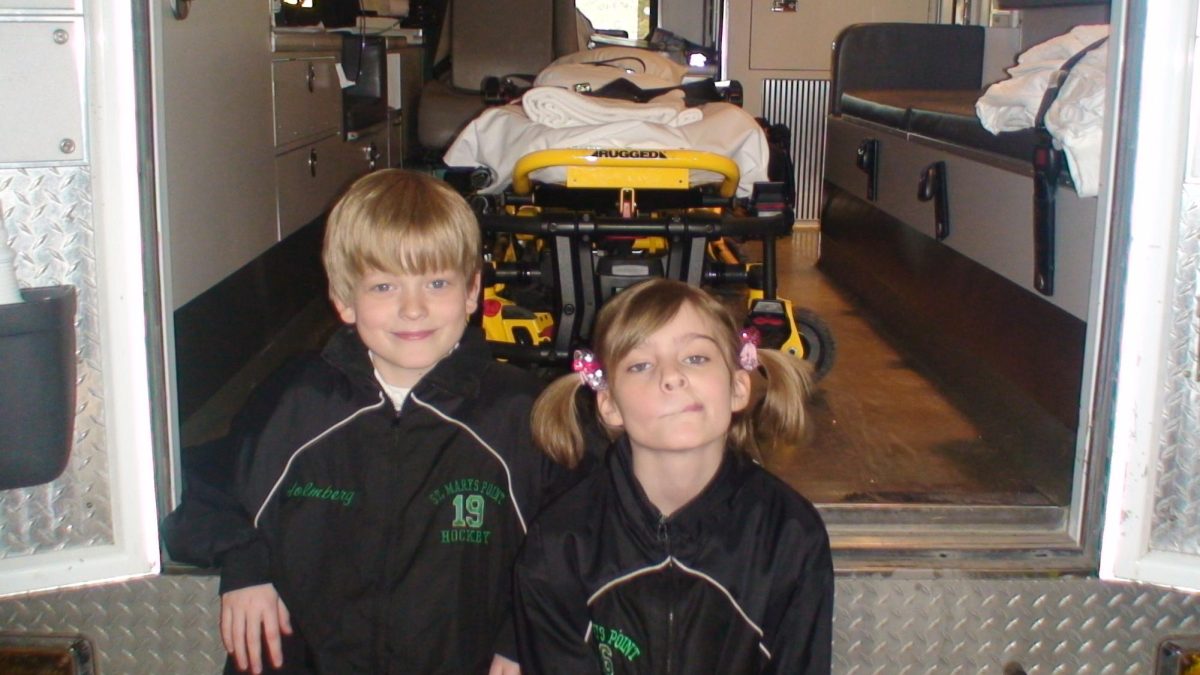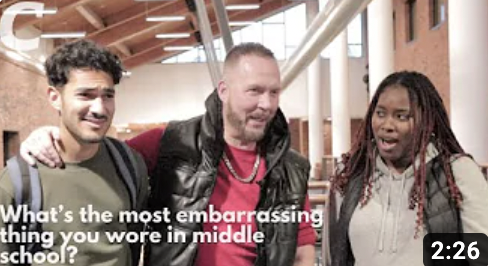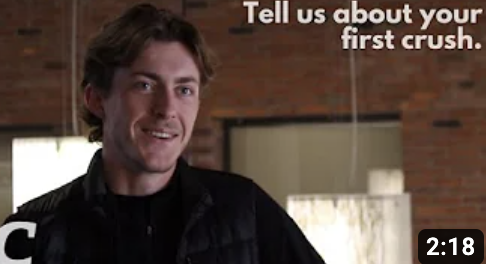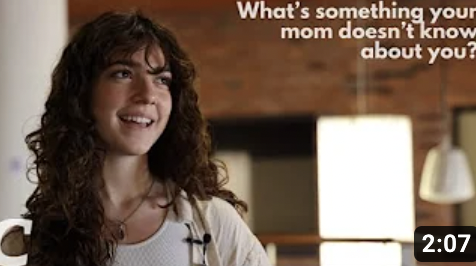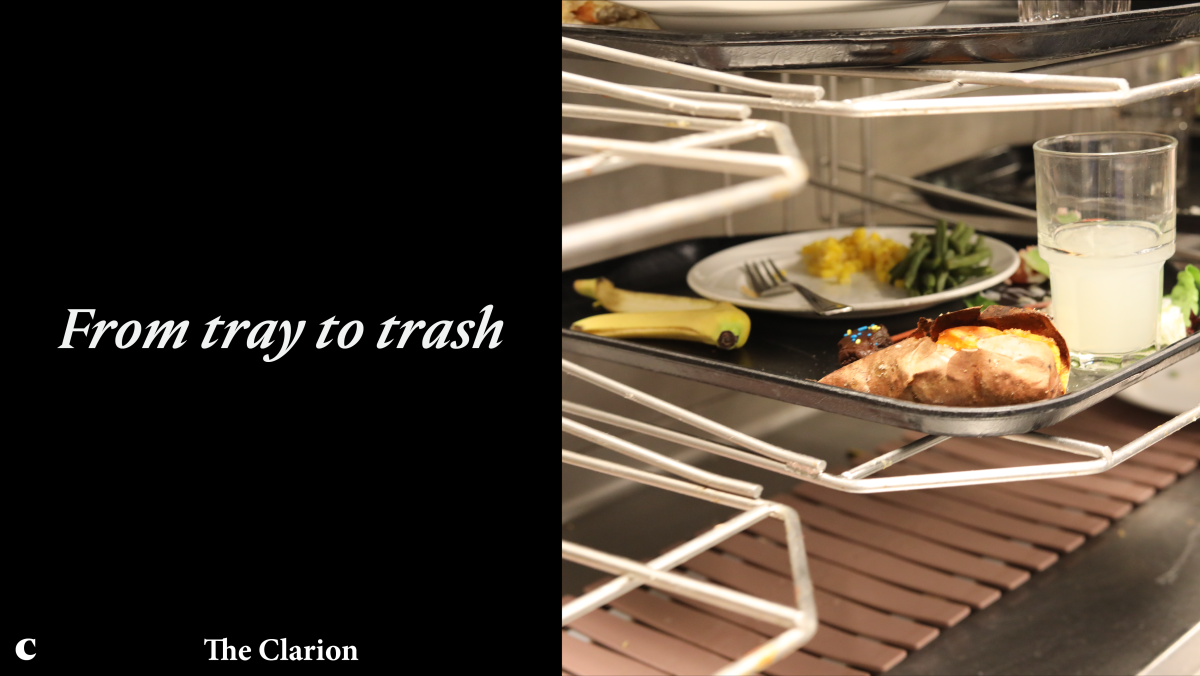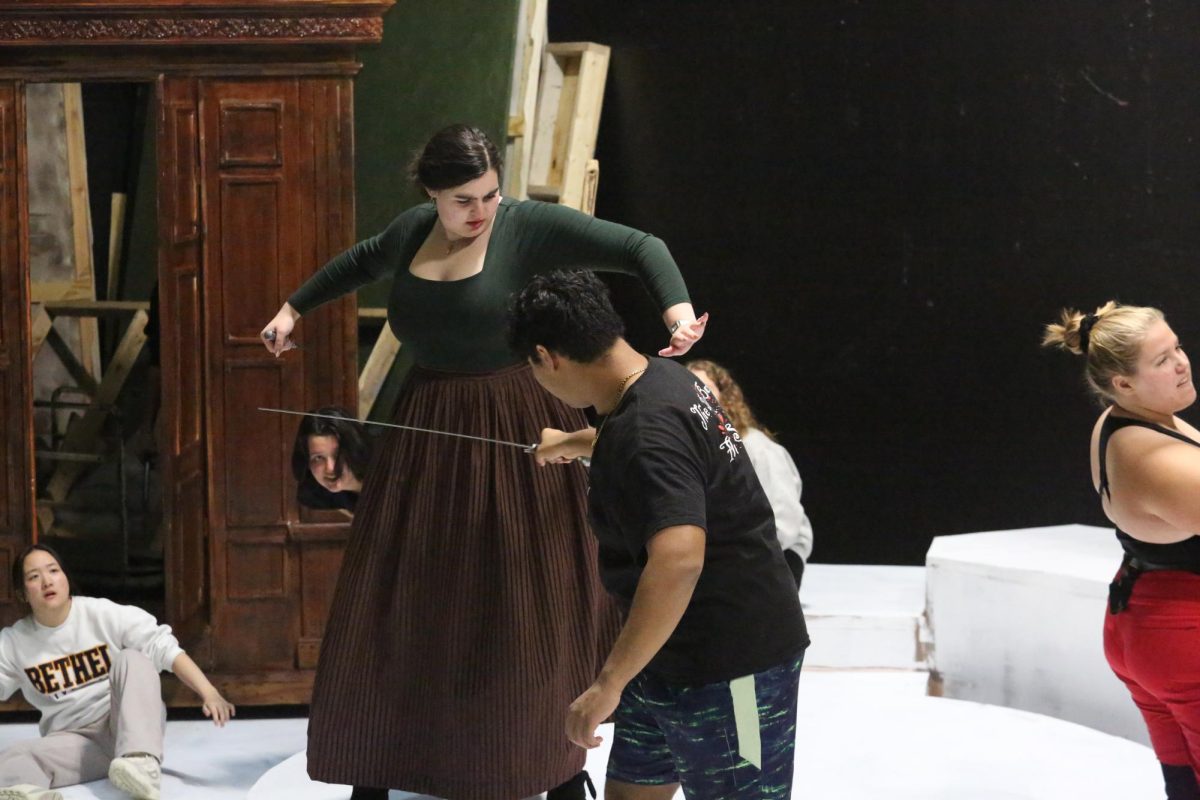Sodexo at Bethel aims for sustainable practices, but food waste numbers keep climbing.
By Rachel Blood
Plastic trays tossed haphazardly onto the racks cycle through the back room of the Monson Dining Center as workers in blue button-downs and black aprons try to clear them as fast as they come. Cups pile high and a hamburger with only a crumb missing from the bun sits nearly untouched beside a pile of crumpled napkins. Full plates make their way down the conveyor belt, their contents dumped into a trash bag. The buzz of rattling silverware and shouts between kitchen employees float through the air. This is the part of the DC students never get to see.
For more than six years, Sodexo food service at Bethel University has partnered with Barthold Farm to recycle food scraps. Charged by the barrel, employees toss waste from the kitchen or leftover unserved food into 32-gallon containers to be wheeled outside to be driven to Barthold’s farm in St. Francis, Minnesota. Bins of severed strawberry tops, celery ends and spare lasagna are cooked and fed to the pigs.
Before Barthold drives to Bethel to pick up the waste, Sodexo weighs and tracks the food scraps.
“We figure that it’s worth it because it’s food that’s not going into the waste stream,” Sodexo General Manager Michele Hamersma, who stepped into Bob Schuchardt’s former position in June, said. “It’s recycling.”
However, only kitchen waste is sent to Barthold. What remains on trays when consumers finish their meals goes directly into the trash.
“I try to be fairly conscious [of the amount of food I take], because one, I know somebody’s going to clean up my tray afterward, and two, there’s an amount of food waste,” senior finance student and DC Manager Jordan Diaz said. “I like to err on the side of ‘I can go back for more.’”
Despite his efforts, Diaz has seen the reality. So much food waste ends up in the trash that the nominal difference of a single consumer hardly makes a difference.

A Sodexo program called Leanpath controls food production based on usage. A menu-generating system based on the projected number of customers per meal calculates how much food to produce at each station based on past data.
Despite the waste control efforts behind the scenes, consumers generate a significant amount of waste. On the dish belt, Hamersma sees piles of untouched food, especially during the 1 p.m. lunch rush.
Bethel also partners with Second Harvest Heartland, one of few food distributors in the state able to take perishable foods. Its distribution system is large enough to take in large quantities of food and redistribute it to smaller food banks. Because the organization only takes large donations, a minimum of half a pallet, Bethel donates food at the end of each semester and before big breaks.
Sodexo’s other sustainability efforts include implementing corn-based recyclable silverware and sourcing Rainforest Alliance coffee from Caribou. Hamersma said these efforts are a combination of a sustainability-focused goal shared by Sodexo and Bethel administration.
“Bethel’s a really good place to be, I’ll tell you that,” Hamersma said. “Students have made it clear that [sustainability] is a very important thing to our community, so we want to try to meet the goals of the university and the student body as a whole to bring programs that will help Mother Earth in the ways that we can.”
Hamersma urges consumers to be aware of the food waste and pay attention to the waste charts on the left-hand side of the dish return.
“It’s great to have lots of choices, but I see a lot of food go in the garbage from the consumer end of it. It’s discouraging,” Hamersma said. “I’ve seen whole sandwiches go down the garbage disposal in the dishroom, and I think that’s just overtaking.”
Some college campuses have phased out the usage of trays, but experimental trayless days at Bethel have resulted in severe pushback. Continuing to use large trays in the DC leaves portion control up to students. Sodexo hosts waste awareness days to increase consumer awareness about the amount of food wasted at each meal.
“I think there just needs to be a lot more education and willingness from people to want to participate and make it happen, because it is an effort,” Hamersma said. “There’s a long way to go, and it revolves around education and talking about it. I think it’s important to have those kinds of messages out there.”

